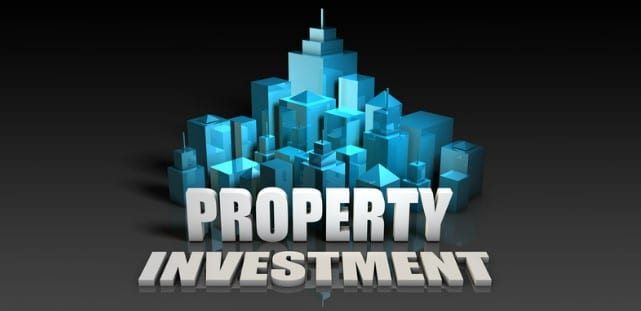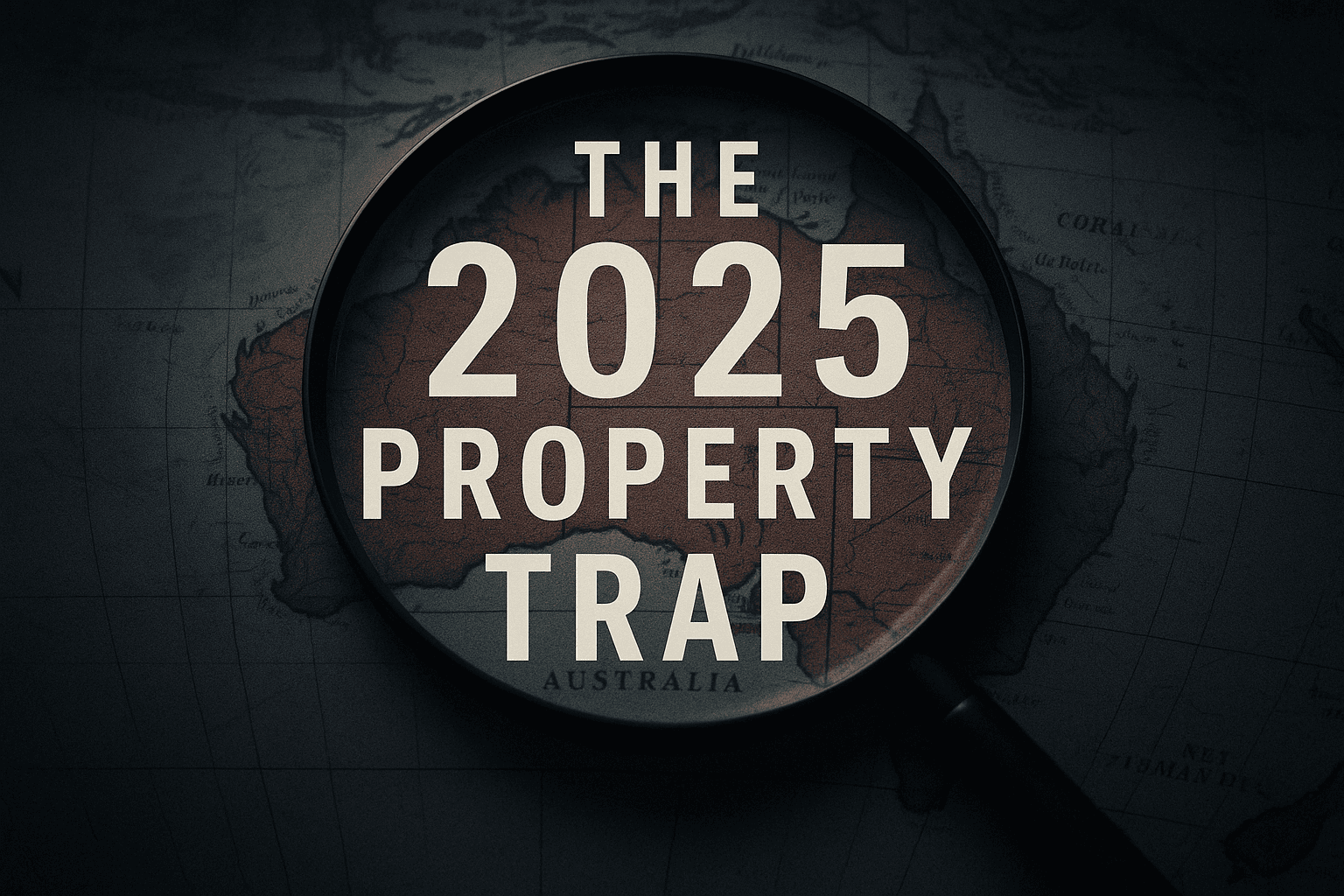
Investment Property Financing – Comprehensive Guide 2023
You won’t get very far as an investor without the ability to secure credit.
Understanding how to finance investment properties is crucial.
A major part of this process is knowing how to make your position attractive to lenders so you can access the finance you need.
It’s not as simple as going to a bank, slapping together an application and Bob’s your uncle. There’s more to it – lenders weigh up dozens of factors to decide whether you’re a safe bet.
Not only do you need to understand the key requirements lenders look at, you also need to know how your finance options fit into your Big Picture investment strategy.
In this article, we’ll explore how investors can leverage loans to build a stronger portfolio and some of the things you can do to improve your position as a borrower when it comes to financing investment property.
Are You Wondering How To Become a Real Estate Investor?
- Register for an upcoming Property Investor Workshop to discover Wealth Creation Strategies we have refined over 20 years of investing.
- Learn the key strategies every Property Investor should know to start their property portfolio on the right track.
- Meet with our Property Investor Seminar coach in a complimentary session to plan how to increase your income in the next 7 – 10 years by investing in real estate.
- Get lifetime mentoring to help build a multi-million dollar portfolio that can create chunks of spare cash flow for retirement.
1. How Investment Property Financing Works
New investors often wonder, “How can I raise finance to invest in property?”
For most people it comes down to lending.
Borrowing money to invest in real estate is a major part of most strategies. Without taking on debt, the average person will rarely advance financially.
We call this “leveraging” finance. That’s where you (the investor) borrows someone else’s money (AKA, the bank) so you can make MORE money. Sounds good, right? It is!
Borrowing money is a great deal for most people. The actual cost and risk of borrowing is very low, but the potential rewards are incredible. The only trick is understanding how to make yourself and your investment strategy an enticing prospect.
The more enticing you are, the easier it will be to secure finance and build your investment portfolio!
2. Raising a Deposit
When an investor buys a property, they generally borrow 80-95% of the property’s value from the bank.
The rest of the money (which is called “capital”) comes from the investor in the form of a deposit.
Raising a deposit can be one of the most challenging aspects of your investing journey.
For most people, the cash required for a deposit comes from the three sources below:
Savings
If you already own your family home, chances are you used savings to pay the deposit.
Many investors continue saving and choose to use some of that money when building their portfolio.
Be mindful that buying a property comes with upfront expenses such as stamp duty, legal fees and inspections. If you’re using your savings, you’ll need to budget for these expenses.
Existing Equity
Using the equity in properties you already own is the best way to expand your portfolio.
Equity is the difference between the market value of a property and the balance owing on your mortgage.
For instance, if your family home is worth $600,000, and you owe the bank $400,000, you have $200,000 of equity. Lenders then calculate the usable equity as 80% of the property’s value ($480,000) minus the outstanding $400,000.
So, in this example, you could use up to $80,000 of the equity in your family home as a downpayment on your next investment.
Using equity allows you to expand your portfolio while preserving your savings.
Inheritance and Gifts
Inheriting money or receiving a cash gift can be a big help when making a deposit on an investment.
Even if you use an inheritance or “gift deposit” to purchase an investment, banks and lenders will still consider whether you are a suitable borrower.
You will need to meet the normal income, credit and savings checks to secure finance for your investment.
3. Lenders Mortgage Insurance (LMI)
Banks and lenders traditionally required a deposit of 20% or more. These days, some lenders offer flexible options that allow you to purchase an investment with a deposit as low as 5%.
That’s a great deal, and it can make it easier to grow your portfolio.
When you borrow more than 80% of a property’s value from a lender, the lender is taking on additional risk. They protect themselves against this risk by requiring investors to take out Lenders Mortgage Insurance (LMI).
LMI is an insurance that protects the lender if you’re unable to repay the loan. As the borrower, you pay a one-off fee to secure the LMI. If you borrow more than 80% of a property’s value, you’ll need to make sure there’s room in your budget to pay the LMI fee.
LMI is affordable and can help you preserve your savings when expanding your portfolio. Plus, it’s possible to refinance your investment down the line and access more favourable loan conditions.
Read Our Ultimate Property Investment Strategy Guide

4. How to Finance an Investment Property – What the Bank is Looking For
Because the bank is lending 80-95% of the property’s value, the bank is taking on substantial risk.
If something happens and you can’t repay your loan, there’s a good chance the bank won’t be able to recover all of its money, even if they sell your property.
To prevent that outcome, banks do everything they can to minimise their risk. That means they assess every loan application carefully. Banks look for borrowers with attributes like:
- A solid employment history
- Healthy savings accounts
- A history of saving money
- Good credit scores
- A low debt-to-income ratio
- A low debt-to-equity ratio
These factors tell a bank about your capacity to repay a loan and whether or not you will be able to meet your obligations over the long term.
Of course, your ability to pay is not the only thing banks look at. When you borrow money, the bank holds a “security” over the property you buy. This means the bank has the right to sell your property if you don’t meet the terms of your loan contract.
Banks don’t just assess you as a borrower. They also assess the property you are buying to verify its value. They consider factors like:
- Property location
- Market drivers (population, economy, suburb yield, etc.)
- Market value
- Dwelling size
- Housing density in the area
- Exposure (e.g. how much money the lender has already invested in a particular marketplace)
The takeaway is that banks want to lend to people with a stable income and employment history who have a low debt-to-equity ratio.
The more attractive you are as a borrower, the more money the bank will be willing to lend. Pretty simple, right?
5. Evaluating Your Investment Finance Application
Borrowing money is a simple process when you’re the customer. For banks and lenders, the behind-the-scenes work is a little more complicated.
Lenders use a test called a Debt Service Repayment (DSR) formula to determine your financial stability. DSR formulas are complex and they vary from one bank to another. Most lenders look at factors like:
- Net worth
- Employment stability
- Proof of savings
- Your age
- Other assets
- Income
- Rental income (this includes existing rental income, as well as rental income you may earn from the investment you are looking to purchase)
Take a look at the following tips. If any of them apply to your situation, making the suggested changes will improve your chances of getting your loan approved.

Property Investment Masterclass
We will show you, the system we’ve developed with…
20 years+ experience in property investing and
6,500+ clients coached in 2 countries…
Build a multi million dollar portfolio in under 10 years
6. How to Improve Your Finance Application
Reduce or Eliminate Unnecessary Debt
Banks want to lend to investors with a low debt-to-income ratio (e.g. someone with plenty of income to service their existing debts).
The less debt you have, the more money they’ll be willing to lend.
The big one for many people is credit cards.
Banks look at credit cards as high-interest, unsecured personal loans. If you have multiple cards and/or a high credit limit, the first thing you should do is cut back.
We recommend limiting yourself to a single credit card with a lower limit, around $2,500 or so.
Why is that?
Even if you owe nothing on your credit cards, lenders consider your credit limit(s) when assessing your eligibility. This can put a stop to your investment goals before you’ve even started.
In the bank’s eyes, having the potential to rack up debt is the same as having already done so. Similarly, other debts (such as car loans and personal loans) can impact your ability to borrow money.
These types of debts should also be minimised before applying for investment loans. You can do that by paying down the loan, refinancing to secure better interest rates, or by paying off the loan entirely.
Good and Bad Debt in Relation to Finance
Okay, so I need to reduce all my debts, right?
Well, no, not all debts.
There are two sides to debt – good debt and bad debt.
Bad debt is the most obvious and easy to accumulate. It’s tied up in your credit cards, your car loan and other consumer debts that do nothing to improve your financial standing.
Bad debt can be hard to shake, and the banks don’t like it! If you’re not convinced, watch this video about how bad debt can really hold you back.
You should reduce your bad debt as much as possible when applying for an investment loan.
Good debt is debt that helps you purchase wealth-building assets. When it comes to property investment, good debt can be an absolute goldmine.
Debt that can be used to purchase appreciating investment (such as real estate) is a great way to leverage finance and grow your own wealth.
As you start paying off your debt through rental income and tax breaks, you’ll widen the gap between the debt and the value of the property.
This is hugely important because it builds equity and frees up funds that can be used to expand your portfolio further.
You can learn more about developing an equity strategy here.
Good debt should be tax deductible. In the case of property, the interest payments, maintenance costs and depreciation on the property may all be claimed as tax deductions.
The biggest benefit of good debt is that it’ll continue to put money in your pocket, rather than taking it away.
The Bank Loves Savings
Along with reducing bad debt, also look at increasing your savings. Savings are a big win in the eyes of banks.
Having a healthy savings account shows the bank that you are saving money consistently. This demonstrates your ability to manage money and set funds aside on a regular basis. In the bank’s eyes, that means you:
- Have a savings buffer that will allow you to continue repaying your debt, even if something unexpected happens (such as losing your income)
- Are more likely to be able to repay the debt over the long term as interest rates and property values fluctuate
If your savings are haphazard, start making regular payments to your savings account. We recommend setting up an automatic transfer that fits within your weekly budget.
This shows potential lenders that you’re smart with money and helps create the savings buffer they’re looking for.
Bad Credit is a Turnoff
Just like bad debt is undesirable, so is a history of bad credit.
Check your credit file and fix any errors or omissions before applying for a loan. If your credit is less than stellar, that doesn’t automatically mean you’ll be turned down. Every lender is different and has different criteria.
Generally speaking though, lower credit scores mean higher interest rates, which can affect the profitability of your investment portfolio.
Your best option is to meet with a mortgage broker who has experience working with property investors.
Mortgage brokers often have access to specialty loan products that are ideal for investors with average credit scores.
There are plenty of things you can do to improve your credit score. You can boost your credit rating by:
- Repaying credit cards and loans on time
- Paying off your credit card balance in full each month
- Consistently paying bills on time and in full (such as utilities and phone bills)
- Reducing the number of credit applications you make
- Lower your total credit card limits to $2,500 or so
- Minimise any unsecured personal loans
- Avoiding changing jobs frequently
- Avoiding moving home frequently
Employment is an Important Factor to Obtain Finance
Lenders like to see stable employment – e.g. being employed in the same role for 12 months or more.
Even if you’re fairly new to your position, roles that are similar to previous jobs might be enough to satisfy a lender.
If you’re self-employed, you’ll need to prove the income you report. A lender will want to see consistent business income.
At a minimum, you’ll need to provide the two most recent years of tax returns. If there is a large disparity in income between those two years, the lender will typically use the lower figure.
Lenders all have their own criteria when it comes to employment. If you’re new to your role (or industry), or if you’re self-employed, that won’t necessarily stop you from being able to obtain finance.
For the best results, find a good mortgage broker to help navigate different lending institutions to find a product that suits your employment status.
Control Your Loans
It’s not just the banks that can say yea or nay – you can too.
As an investor, it’s important to know your rights and learn how to recognise the best types of investment loans for your strategy.
Before signing off on a loan doc, review your options carefully and consider how they fit into your short and long-term investment goals.
Spread Your Risk
Most banks have clauses in their loan documents that allow them to review any of the loans you hold with their bank at any time.
This clause means the bank is entitled to use the equity in any property (that is held by the same bank) to protect themselves against the changing values of other properties. They can do this even when one property is not specifically attached to the loan in question.
In other words, if you have several properties financed by one lender, the lender can use any of your properties as security against your total debt.
This can severely limit your borrowing capacity and investing future.
The best solution to this problem is to use more than one lender.
Don’t just rely on the bank you’ve been with your whole life – explore loan products from other banks and non-bank lenders.
Spreading your loans between multiple lenders helps to protect investment properties from being used as security against unrelated debts.
We typically recommend using a different lender each time you invest. This is a simple way to control your financial future and minimise the risk of your portfolio.
It’s helpful to work with a mortgage broker – they have access to many non-bank lenders and can minimise your risk as much as possible.
Don’t Hold Anything Back From Your Lender
Above all, disclose anything and everything about your financial situation.
If a lender discovers something you failed to disclose, they could decline your loan application based on non-disclosure.
Even if it’s something you know will have a negative impact on your borrowing ability, it’s better to be honest than to be caught in a lie!
7. Interest-Only Loans Vs Principal and Interest – Which Is Better?
The big choice for most investors is interest-only vs principal and interest loans.
If you have the option, it’s always advisable to consider interest-only loans.
The logic is that interest-only repayments are always going to be lower than a principal and interest repayment.
Since most home loans allow you to make additional repayments at any time without penalty, it’s a no-brainer to choose the loan with lowest compulsory repayments.
With an interest-only loan, you could choose to make the same repayment as if the loan was principal and interest. This provides extra flexibility when managing your portfolio and finances.
Keep in mind that interest-only repayments are only available for a set period – usually 10 years or less.
At the end of the interest-only period, you will have to start making repayments on the principal loan value.
With interest-only loans, you need to make sure you’re balancing rental income and the capital growth of the property. This will allow you to minimise your repayments while still accumulating equity that can be used to grow your investment portfolio.
You can typically refinance an interest-only loan into a principal plus interest loan if your strategy changes.
With a principal and interest loan, repayments are higher because you are making repayments against the full value of the loan.
This can affect the profitability of positively-geared investments, but it can also help to grow your equity faster.
The downside is that you will be locked into principal and interest repayments for the life of the loan. You won’t be able to refinance a principal and interest mortgage into an interest-only mortgage.
The choice between the two ultimately depends on your strategy, the property you’re buying, and whether you can balance rental income against long-term capital gains.
That’s why having an experienced finance broker on your team is vital.
BECOME A PROPERTY INVESTING EXPERT
The basics in this blog are a great start, but there are many more ways you can optimise your financial structure for better returns and a stronger portfolio. To learn more, join our free property investing seminar.
Recent Articles
The 2025 Property Trap: 5 Warning Signs Every Australian Investor Must Know
In 2025, Australia’s property market is filled with hype, confusion, and hidden risks. Before you buy, learn the 5 most common traps that can derail your investment goals—and how to avoid them like a pro.
Building a $100k Passive Income Stream Through Property: The ‘Property Stacking’ Method Explained
Discover how to build a $100K passive income stream through property using the proven Property Stacking Method. Learn the three core principles smart Australian investors are using to scale their portfolios faster — without financial stress.
Ultimate Property Investment Strategy Guide 2023
Which Property Investment Strategies Will Make You Money? Building your property investment...
How to Build a Property Portfolio with $100k or Less
Starting your property investment journey can seem daunting. There’s lots to research and plenty...
How To Develop Good Financial Habits That Lead To Wealth!
Good financial habits are the basis to creating wealth. Building financial freedom is not something you learn overnight, it takes time and a foundation of solid habits that you perform day in and day out.
The 7 Plans Every Property Investor Must Know To Succeed
When it comes to property investing as the saying goes, if you don’t have a plan, then you could be planning to fail! While there are many factors we can’t control in the market, there are certain facets we can manage to give us the best possible chance of success. In this article we will help you understand the 7 plans every property investor must know.
The Truth On How Many Investment Properties You Need To Retire
Using real estate to create financial security for the future is a popular option for many Australians, however it can be tricky to know how many investment properties you need to retire to get the outcome you desire.
What Is The Best Type Of Property Investment?
When you strive to learn everything you can about investing in property, you increase your chances of creating generational wealth! The best type of property to invest in is dependent on a number of factors about the investor and their real estate strategy.
The Property Investment Basics That You Need To Know
Real estate has the potential to become your main vehicle for creating wealth, but only if you take the time to learn some crucial property investment basics to set you up for success as an investor.














